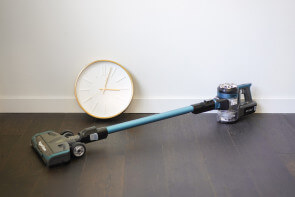
The Best Acoustic Guitars for Beginners
After weeks of research and firsthand testing, we’ve concluded that the Taylor – Academy 12 is the best acoustic guitar for beginners. While it may be a step up in price, the Academy 12 makes up for it with unparalleled playability, superior construction and beautiful sound. In the world of acoustic guitars, experts say “it’s expensive to buy cheap” (more on that below). Still, our budget pick Ibanez – AW54OPN is a quality affordable option.
After weeks of research and firsthand testing, we’ve concluded that the Taylor – Academy 12 is the best acoustic guitar for beginners. While it may be a step up in price, the Academy 12 makes up for it with unparalleled playability, superior construction and beautiful sound. In the world of acoustic guitars, experts say “it’s expensive to buy cheap” (more on that below). Still, our budget pick Ibanez – AW54OPN is a quality affordable option.
Table of contents
- How we selected finalists to test
- Compare the best acoustic guitars for beginners
- What is an acoustic guitar?
- How to choose an acoustic guitar for beginners
- Important features to consider
- How we tested
- Top pick: Taylor – Academy 12
- Budget pick: Ibanez – AW54OPN
- Best for kids: Taylor – GS Mini
- Other finalists we tested
About our expert tester
My name is Tyler. I’m a guitar instructor, recording artist and guitar nerd in San Diego, California. Throughout my 13 years playing the guitar and five years as an instructor for Mobile Music Teacher, I’ve gained a lot of firsthand experience with beginner acoustic guitars as both a student and a teacher.
I’ve always said that there’s no greater joy in my life than setting someone up with a guitar that they love. I believe that a guitar can grow to be a valuable companion in life, and I cannot stress enough the importance of picking a good one. So let’s begin!
How we selected finalists to test
Throughout my time as a guitarist and guitar instructor, I’ve had the pleasure of playing hundreds of different guitars. Whether shopping for myself, a student or for random people in need of advice at a music store, I’ve gained an understanding of acoustic guitar options for players of all levels. I have bought and sold numerous guitars of my own, so even before my extensive research for this review, I was familiar with most of the final candidates for the best beginner’s instrument.
In addition, I attend The NAMM Show (National Association of Music Merchants) in Anaheim, California, every year. Thousands of companies set up shop there to make connections in the industry and promote their products. In this mile-wide musical candy store, most instruments are available for us players to demo.
Compare the best acoustic guitars for beginners

| Product | Price | Body Style | Playability Rating (1-10) |
|---|---|---|---|
| 1. Taylor - Academy 12 | $$$ | Grand Concert | 10 |
| 2. Ibanez - AW54OPN | $$ | Dreadnought | 9 |
| 3. Ibanez - AC240OPN | $$ | Grand Concert | 10 |
| 4. Taylor - GS Mini | $$$ | Grand Concert | 9 |
| 5. Seagull - S6 | $$$ | Dreadnought | 7 |
| 6. Fender - CD-60S | $$ | Grand Concert | 9 |
| 7. Yamaha - F335 | $$ | Dreadnought | 8 |
| 8. Yamaha - FS800 | $$ | Both Styles Available | 6 |
| 9. Epiphone - PR-150 | $ | Dreadnought | 6 |

What is an acoustic guitar?
Acoustic guitars are guitars that do not require electrical amplification. These instruments produce sound with a hollow body that amplifies the string vibrations. Practically speaking, acoustic guitars are guitars that don’t need to be plugged in.
Electric guitars are different from acoustic guitars in that they require amplification through a separate unit fittingly called an amplifier. There’s no right or wrong answer when choosing between an electric and acoustic guitar; it’s just personal preference of sound and musical taste. A large benefit of acoustic guitars is that they don’t need an amplifier, an electrical outlet or any cables/wires to play and produce sound.
There are, however, acoustic guitars with “pickups” installed within the body cavity. The pickups allow the guitar to be plugged in and amplified, but these guitars are typically still referred to as acoustic. Acoustic guitars with pickups are not necessary (or appropriate) for beginners, and they are almost exclusively used in live performances.
How to choose an acoustic guitar for beginners
When purchasing an acoustic guitar for new players and students, a very important trade-off arises. Acoustic guitars, primarily the more affordable ones, can be risky purchases due to their tendency to become less playable over time. It’s a gamble of money versus longevity. Spending your money on a guitar with a lower price tag may seem sufficient for a new player, but in reality you’re likely committing to a higher-priced upgrade in the not-so-distant future.
In addition longevity issues, cheaper guitars are harder to play. Very small differences and inconsistencies in a cheaper guitar’s construction can make a world of difference when it is played. When the strings are too hard to press into the fretboard, students (particularly children) can get very discouraged and quickly storm away with sore fingertips. This can be due to various factors that must remain in balance in order for a guitar to play, feel and sound the way we want it to.
Guitars that cost around $300 or less tend to fall victim to these issues of quality. Usually, the necks of these cheaper guitars will warp over time due to poor manufacturing and/or subpar wood quality. This slight change in the overall balance of the guitar can have a significant effect on its playability. However, our runner-up pick, the Ibanez – AW54OPN, was an exception to this.
Now you would think there’s a formula that guitar companies use to manufacture consistent guitars. But wood has dynamic properties, which means a guitar expands and contracts with changes in weather, humidity and temperature (just like it would in a tree). It’s important to invest in a guitar that was built with these factors in mind. Even though a guitar may play well upon first purchase, it’s not a guarantee that things won’t change over time.
So, you should invest in an instrument that is unlikely to change significantly over the years. Although it’s difficult to predict the volatility of wood movement over long periods of time, we can infer many things by taking initial measurements and assessing any inconsistencies in areas like neck alignment and tuning issues.
Every piece of wood is different, and quality wood with solid manufacturing comes at a higher price. It’s no coincidence that the best-sounding guitars will also maintain their structure and balance better than all others. So what does this all mean? Ultimately, it’s worth it to spend a decent bit of cash on quality wood and solid construction in even a beginner’s guitar. However, if this isn’t realistic for you, we’ve included great fallback options with lower price tags that will still hold their own and perform the way you’ll need them to.
Important features to consider
When shopping for an acoustic guitar, there are many things to consider that affect the instrument’s resulting sound and playability.
Action
When people talk about “playability” of guitars, it’s generally safe to assume that they’re referring to the action of the guitar. This is the very fine balance of string proximity to fretboard.
Guitars with lower action, or those with strings that are closer to the fretboard, are generally much easier to play than guitars with higher action. However, if the action is too low, the strings can make unintended contact with multiple frets, leading to a “buzzing” sound that may render the guitar unplayable. Fittingly, this is commonly referred to as “string buzz.”
Guitars with too high of action are also difficult to play for beginners and can lead to a variety of issues. When just getting started on the guitar, your fingers are very sensitive to the strings, and calluses have likely not formed on your fingertips yet. With a greater distance between the strings and the fretboard, the strings need to be pressed harder, a strain that you can feel in your fingers. This is almost always inhibiting and discouraging to children, and can lead them to put down the instrument during practice or even give it up completely. Choosing an acoustic guitar with a reliable build quality should lead to lower (but not too low) action, relieved fingers and a happy guitar player.
Neck relief
The neck relief of a guitar is the curvature of the neck. In general, acoustic guitar necks should be somewhere from straight to very slightly bowed. In other words, a typical guitar neck will form a very shallow “U” shape when the guitar is lying face up on a flat surface.
Neck relief can be adjusted by using a small tool (typically either an Allen wrench or a tool provided by the manufacturer) to tighten or loosen the guitar’s truss rod. The truss rod is a metal rod that extends from the point of contact with the body all the way to the headstock, or the top of the guitar.
Adjustment of the truss rod affects the curvature of the neck itself. However, when the neck on an acoustic guitar has significant relief issues, it can be extremely difficult or even impossible to fix completely.
Intonation
The intonation of a guitar is the instrument’s relative tuning to itself. For example, if you were to pluck the open sixth (lowest) string, you would be playing an E note. If the guitar is properly intonated, then the instrument should maintain the same accuracy for each and every note as you move up the fretboard.
Good intonation is crucial to a guitar. With inconsistencies in the instrument’s intonation, certain chords and notes will not ring harmoniously as you progress up the fretboard. This leads to extreme restriction, and sometimes even a totally scrapped guitar.
Intonation problems are far more common with cheaper acoustic guitars. These issues are difficult to fix, and buyers of cheap low-end guitars should be aware of this. These guitars could very well shift and twist their way to poor intonation, rendering them restrictive and potentially unplayable.
Size and shape
Guitars come in many different shapes and sizes. Ultimately, there is no right size or shape; it all boils down to personal preference.
Smaller-bodied guitars such as the Taylor – GS Mini are fitting for children due to their reduced size. Children frequently have difficulty playing larger, full-size guitars due to an inability to see their fretting hands or reach the strings comfortably with their strumming hand. They may also have an overall feeling of discomfort and awkwardness with such a large instrument.
Adults tend to prefer full-sized guitars. However, smaller-bodied guitars can be very useful for traveling, and many adults and teenagers choose smaller guitars for this reason. I personally use a Baby Taylor acoustic guitar for my lessons because it is so easy to transport.
Generally, the bigger the guitar is, the bigger the sound will be. Smaller bodies lead to less resonance and thereby a lesser sound output, particularly in bass response. This does vary, however, and construction of the guitar also plays a large role in the instrument’s resonance.
Some guitars also feature what’s known as a “cutaway.” Cutaways are inlets cut into the body of the guitar itself, allowing ease of access to the higher frets. These frets aren’t as frequently played on acoustic compared to electric guitars, especially for beginners, but a cutaway can be nice to have for some sweet acoustic guitar solos down the road.
Wood/Material
The wood type and construction have a huge impact on a guitar’s tone. There are a variety of tonal characteristics amongst different wood types, and some companies even gear different models toward different kinds of playstyles. Taylor Guitars has many great resources on the topic, and they commonly refer to these sonically characterized woods as tonewoods.
Some lower-end guitars are also made of what’s called a wood laminate. Laminates are multiple layers of thinly processed wood that have been pressed and bonded together with an adhesive for strength and stability.
Now, tonewoods and pretty woods are great and all, but they won’t get you very far if you’re not able to play them. And with beginner guitarists, playability is of paramount importance. With this in mind, it’s important to consider a guitar to be at its most playable at the time of purchase. In reality, slight alterations and adjustments can be made to your guitar down the road, but most of these alterations are highly recommended against unless they are absolutely necessary. They can also cause significant damage to your guitar if not done properly.
How we tested
When testing these guitars in person, we followed very standard measuring/recording techniques that can be easily understood and recreated here.
The obvious variable in these tests is that we couldn’t sit and measure the exact guitar that you would be purchasing. Your guitar’s measurements will not match ours, but consistencies do still ring true throughout models in testing. Companies that have a reputation of guitars with great playability have those reputations for a reason. Within these companies, essential components like wood quality and ultra-precise construction are made a priority in their manufacturing and quality control.
Action/String height test
As you now know, picking an acoustic guitar with low (but not too low!) action is important and makes the instrument much easier to play for beginners. To measure action, we used a precision ruler (1/64”) to measure the distance from the bottom of the low E and high e strings to the top of the 12th fret. This is a standard method of measurement for guitar action.
Sometimes when the action of an acoustic guitar is too high, players will swap out the strings for a lighter gauge set. While this can decrease action by putting less stress on the neck and allowing it to straighten, it is not a reliable method of adjustment. Changes in action through this method are unpredictable and can be inconsistent, thereby potentially leading to other problems such as string buzz and intonation issues.
| Product | Action of Low E (Inches) | Action of High E (Inches) |
|---|---|---|
| 1. Taylor - Academy 12 | 7.5/64 | 5/64 |
| 2. Ibanez - AW54OPN | 7.5/64 | 6.5/64 |
| 3. Ibanez - AC240OPN | 8/64 | 5.5/64 |
| 4. Taylor - GS Mini | 7/64 | 5/64 |
| 5. Seagull - S6 | 7/64 | 5.5/64 |
| 6. Fender - CD-60S | 6/64 | 5/64 |
| 7. Yamaha - F335 | 9/64 | 5.5/64 |
| 8. Yamaha - FS800 | 9.5/64 | 7/64 |
| 9. Epiphone - PR-150 | 6.5/64 | 5.5/64 |
Neck relief test
We tested for neck relief using feeler gauges. These thin blades of steel allow us to measure the curvature of a guitar neck with a high level of precision. The blade thicknesses span from 0.0250 inches (0.635 mm) down to 0.0015 inches (0.038 mm).
This test was conducted by fretting the strings at the first fret (using a capo), along with the fret that marks where the neck merges with the body of the guitar. We then measured the distance between the bottom of the low E and high e strings to the top of the 7th fret. This method is commonly used to measure the curvature of the neck that has extended past the body of the guitar.
| Product | Neck Relief of Bass Side (Inches) | Neck Relief of Treble Side (Inches) |
|---|---|---|
| 1. Taylor - Academy 12 | 0.0070 | <0.0015 |
| 2. Ibanez - AW54OPN | <0.0015 | <0.0015 |
| 3. Ibanez - AC240OPN | 0.0025 | <0.0015 |
| 4. Taylor - GS Mini | 0.0030 | <0.0015 |
| 5. Seagull - S6 | 0.0040 | 0.0030 |
| 6. Fender - CD-60S | 0.0080 | 0.0025 |
| 7. Yamaha - F335 | 0.0050 | 0.0015 |
| 8. Yamaha - FS800 | 0.0130 | 0.0040 |
| 9. Epiphone - PR-150 | 0.0090 | 0.0040 |
Intonation test
Our test for a guitar’s relative tuning to itself, or intonation, was conducted easily using the very popular instrument-tuning mobile phone app called Guitar Tuna. In the paid version of this app, you have access to “pro accuracy,” which measures each note down to the cent. Pretty nifty to have such a great tool on your phone!
For this test, we tuned all open strings to their exact designated frequency (calibrated to 440 Hz), and then compared them to the resulting frequency of each string while fretted at the 12th fret. This distance is known as an “octave,” and if the guitar is properly intonated, each fretted note should exactly match its open-stringed counterpart.
Differences in tuning were recorded for any note that exceeded +/- three cents of its relative open string tuning. Positive values represent the fretted note being sharper than the open note, and negative values represent the fretted note being flatter than the open note. We decided to leave out any differences of three cents or less, because at that level of accuracy, even just strumming the string harder would push the note outside that range.
It is important to note guitars that have inconsistencies in sharp versus flat fretted notes. When poorly intonated guitars aren’t even “consistently poorly” intonated, attempting to fix them is almost always a losing battle.
| Product | Intonation of Low E String (Cents) | Intonation of A String (Cents) | Intonation of D String (Cents) | Intonation of G String (Cents) | Intonation of B String (Cents) | Intonation of High E String (Cents) |
|---|---|---|---|---|---|---|
| 1. Taylor - Academy 12 | 0 | 0 | 0 | 0 | 0 | 0 |
| 2. Ibanez - AW54OPN | 0 | (-) 5 | 0 | 0 | 0 | 0 |
| 3. Ibanez - AC240OPN | 0 | 0 | 0 | 0 | 0 | 0 |
| 4. Taylor - GS Mini | (+) 6 | 0 | (-) 8 | 0 | 0 | 0 |
| 5. Seagull - S6 | (-) 8 | 0 | 0 | 0 | 0 | (-) 6 |
| 6. Fender - CD-60S | 0 | (-) 10 | 0 | 0 | 0 | 0 |
| 7. Yamaha - F335 | 0 | 0 | (+) 6 | (-) 5 | 0 | 0 |
| 8. Yamaha - FS800 | (+) 5 | (+) 8 | 0 | (+) 5 | (+) 5 | 0 |
| 9. Epiphone - PR-150 | 0 | 0 | 0 | (+) 8 | (+) 7 | (+) 5 |
Sound quality and tone test
Thanks to Guitar Center in La Mesa and San Marcos, California, we were able to conduct and record our sound quality and tone testing in soundproofed, private lesson rooms in complete silence. This was incredibly useful and allowed us to record each guitar individually using an Apogee MiC 96k. Tonally, what you prefer becomes more subjective, so it can be helpful to hear the guitars in this way before purchasing.
Three different styles were performed and recorded on each guitar:
- Chord progression strumming with a guitar pick.
- Fingerpicking and percussive play without a guitar pick.
- Open G chord strummed slowly, one string at a time.
While these sound clips may not hugely influence your decision, they were helpful for us to listen back to and reference the general character of each guitar. It’s useful to acknowledge that different guitars have varying strengths and weaknesses in regard to things like sound clarity, resonance, frequency distribution and overall tone. Oftentimes, cheaper guitars will exert dissonance in the form of harsh overtones, or frequencies greater than the intended note, which can be off-putting to the listener’s ear. You may hear this in some of the recordings as a “warbled” sound while the notes or chords are sustained.
Top pick: Taylor – Academy 12
The Taylor – Academy 12 is our top choice for a beginner acoustic guitar. This instrument played and sounded like a guitar of twice its cost and had a noticeably better build quality than its competitors. Due to its moderately low action and balanced neck relief, this guitar felt very easy to play.
While it didn’t have the lowest action or the straightest neck that we came across, the Taylor’s slightly increased space between the strings and the fretboard allowed us to really jam out without any concern of string buzz. This also allowed the guitar to have tons of sustain, as the strings did not come in contact with any unintended frets.
The intonation of this guitar was flawless. Contrary to nearly every other guitar we tested, the notes along the entirety of this guitar’s neck remained consistently in-tune and sounded as intended.
Tonally, the Academy 12 sounded full and bright. This primarily Sitka spruce guitar was very responsive and greatly accommodated all playstyles. From chord strumming with a guitar pick, to percussive fingerpicking, this instrument remained comfortable and maintained its fullness without falling short on any particular style.
It’s no surprise that the Taylor – Academy 12 steals the show for a beginner guitar. Taylor’s website states:
“One of the biggest reasons why new guitar players give up is the lack of a quality instrument. High action, bad intonation or cruddy sound will quickly derail the playing experience. The goal [with the academy series] was to remove all the barriers that get in the way, from feel to sound to cost. The result is a guitar that’s easy on the hands and helps you sound great from your first strum.”
We couldn’t put it any better ourselves. The Academy series was released just over a year ago and has been spreading like wildfire ever since. When I first sat down in the Taylor Guitars room at NAMM 2017, the Academy series caught my eye. Upon playing, it was clear that this model would revolutionize beginner acoustic guitars for years to come. It just felt and sounded like a far more expensive guitar. In addition to its low action and beautifully bright and resonant tone, the guitar rested comfortably between my lap and strumming arm with the aid of Taylor’s ergonomic armrest cut into the edge of the guitar body.
This series is available with steel strings as a dreadnought or grand concert body shape, or nylon strings with a grand concert shape for classical fingerpicking style. You can’t go wrong with any of these, but we recommend avoiding the nylon string model unless you or your child plan to stick to classical fingerpicking.
Additionally, this guitar comes with a deluxe gig bag included upon purchase. These cases are lightweight, sturdy and will help keep your guitar protected without the need to spend extra money on a guitar case.
If this guitar is within your budget, or even slightly outside of it, we definitely recommend going with the Academy 12. Choosing the right starting guitar can be the difference between a student developing a lifelong passion or another item collecting dust in the closet.
Key takeaways:
- Taylor’s Academy Series sets the bar for high quality and affordable beginner acoustic guitars, and the Taylor – Academy 12 is a shining star that accommodates all play styles.
- Available in dreadnought and grand concert body shapes, the Academy 12 produces a bright and balanced sound.
- You can expect great playability with low action and excellent build quality in these guitars.
- Taylor’s ergonomic armrest enhances the playing experience and allows for maximum comfortability while strumming.
- These guitars come with a deluxe gig bag for safe transport.
Budget pick: Ibanez – Artwood AW54OPN
We were enamored by the sound of the beautiful, all-mahogany Ibanez – AW54OPN. This instrument exerts a rich and full tone that allows players to really jam out without resulting in cacophonous overtones. It’s common for more affordable guitars (like this one) to lack depth in midrange response, but this guitar represents the sound of mahogany: warm, full and balanced. When compared to the Taylor – Academy 12, this guitar sounded less bright and focused. This was not surprising, as mahogany is a much darker sounding tonewood than Sitka spruce.
Throughout our playability testing and measurements, the Ibanez excelled on all fronts. It’s very rare to play an acoustic guitar with such low action and neck relief. In fact, while testing for neck relief, we had to resort to our thinnest gauge blade (0.0015 inch) for both sides of the fretboard and there was still room to go thinner. Typically when this is the case, there is string buzz present somewhere along the fretboard. This wasn’t the case, as the guitar played and sustained beautifully in all areas. The Ibanez was the only guitar we tested that had this low of action throughout the entirety of the fretboard.
Budget pick: Ibanez - Artwood AW54OPN
With the beautiful, well-rounded sound of a full mahogany wood guitar, the Ibanez looks just as good as it sounds. This guitar is an excellent pick for players on a budget and for those looking for ease of playability with well-built construction from a reliable company.
The other Artwood series model that we tested, the AC240, felt and sounded very similar to the AW54. In our ears, the AW54 had a slightly bigger sound than the AC240. This is likely due to the larger resonance area in the body. Some players would prefer the more compact size of the AC240, but you can’t go wrong with either. It may sound like a significant trade-off of size versus sound, but both guitars play very comfortably while sounding full and balanced.
Both of these models are excellent instruments and either one would make a great guitar for beginners. However, the dreadnought body shaped AW54 is priced significantly lower than the grand concert shaped AC240, and its sound and playability lead us to wonder why it’s priced differently at all. If you think you or your child would prefer a slightly smaller body shape, and you don’t mind paying the difference at around $100, then the AC240 is also an excellent choice.
Key takeaways:
- The solid mahogany wood composition of the Ibanez – AW54OPN produces a beautiful warm and full sound.
- The Ibanez Artwood series had less brightness and clarity than the Taylor – Academy 12.
- This guitar tested to have extremely low action and played very easily.
- The grand concert shaped AC240OPN felt and sounded very similar to the dreadnought shaped AW54, but has a significantly higher price tag.
Best for kids: Taylor – GS Mini
The Taylor – GS Mini may be small, but it packs a huge punch. This guitar produced tons of sound with the brightness and clarity you’d expect from a Taylor, but at a reduced size compared to the other full-sized guitars. The neck was straight and the action was very low.
Tonally, you can expect the GS Mini to be bright and focused. However, due to its smaller body, you can also expect this guitar to produce less bass response than full-sized guitars.
Aside from the guitar’s excellent playability and tone, we did find some intonation issues. The intonation of the D string was flat (-), while the low E string was sharp (+). It’s common for the low E string to be poorly intonated in acoustic guitars due to it putting the most force and tension on that side of the neck, but the intonation of the D string was surprising.
Buying a smaller guitar poses the question, Will I eventually need a size upgrade? Fortunately, the Taylor GS Mini is quick to answer. Due to this guitar’s precise construction and wood quality, this instrument will hold its own and prevent the need for an upgrade. I know adults who prefer the size and convenience of a smaller-sized guitar, and I’ve had young students that prefer the size of a full guitar. Ultimately, size preference varies per player, but you can count on this guitar to sound at or above the level of a full-sized instrument.
Best for Kids: Taylor - GS Mini
Without question, the Taylor GS Mini is our top-pick acoustic guitar for children. This guitar renders the size versus sound tradeoff obsolete by producing a sound with greater fullness and clarity than guitars far larger, while also maintaining incredible build quality and playability.
The reduced body size of the GS Mini allows it to sit lightly on your lap and play very smoothly. As a guitar instructor that travels from house to house every day, I choose to carry around a Baby Taylor. But if I moved around any less than I do, my go-to would be a GS Mini.
Aside from being a great fit for kids, the GS Mini also makes for a great travel guitar, as it is easy to carry on your back in its case (included with purchase) or to stow away when cargo space is limited.
Key takeaways:
- The Taylor – GS Mini is excellent for kids due to its reduced size and top-tier build quality and sound.
- This guitar makes for a great travel companion, as it is easy to carry on your back in its accompanying case and takes up minimal cargo space.
- Kids will find this guitar very comfortable and easy to play due to its size, low action and lightweight construction.
- Although this guitar has the bright and full sound of a Taylor, it does have less low-end bass response due to its smaller size.
Other finalists we tested

Aside from our winners, we tested six other guitars that, in one way or another, fell short to the competition. We don’t recommend these guitars, as they’re priced the same or higher than our top picks but don’t perform as well.
Seagull – S6 Original Acoustic Guitar
The Seagull – S6 is a classic. Seagull makes great instruments at an affordable price, and I’ve had the pleasure of playing many of them. However, due to the release of the Taylor Academy Series, the S6 has met its match. At similar price points, the overall sound, playability and structural reliability of the Taylor – Academy 12 trumps the Seagull S6 without question.
The S6 plays well and is a well-built instrument. It has decent neck relief with low action, and has only mild intonation issues. However, the guitar tone lacks brightness and clarity compared to the Academy 12.
Having said this, Seagull guitars do have a very different sound than Taylors. Seagull has been around since 1982, and has persisted due to their unique sound, solid playability and affordable price. If you’re a player who just prefers the fundamental tone of Seagull over Taylor, then this instrument will make a fine selection.
Yamaha – F335 and FS800
Yamaha acoustic guitars are decent for the money, but are a good example of guitars that will not hold up in time and will eventually result in the need to upgrade. I’ve had many students over the years who started out with Yamaha guitars that needed adjustments right out of the box, and then would continue to warp over time. Our test results support this, as these guitars had extreme intonation issues and high action.
The F335 felt and played significantly better than the FS800. Its neck was straighter and its action was lower. While only two of the strings had poor intonation, it was concerning because they were inconsistent. The open D string compared to its octave on the 12th fret was off by +6 cents, but the G string was off by -5 cents. This inconsistency between adjacent strings would cause major playing issues as you move higher up the neck of the guitar.
The FS800 had significant intonation issues, as four out of six strings were off by at least +5 cents. It’s surprising that Yamaha would let this guitar leave the factory with this intonation issue, but it’s also possible the instrument warped on its own due to climate changes or during transit.
These guitars may have had more of a chance if they weren’t in competition to the Ibanez – AW54. But these Yamaha models are very similar in price yet fail to deliver the same quality. The better playability and sound quality of the Artwood series blows away both the F335 and FS800 from contention.
The Yamaha models we tested proved to harbor an excess of intonation inconsistencies, higher action and harsh overtones that can be heard in our recordings.
Fender – CD-60S
Fender’s legacy in the world of guitars exists for a reason. This reason is not that they make exceptional acoustic guitars. If we were here to discuss electric guitars, you can bet Fender would populate the list. As for their acoustic models, they tend to fall a bit short.
Having said this, I was surprised by the playability of the CD-60S. The neck profile was very comfortable, and the action was quite low too. Unfortunately, the action was a little too low, because there was some string buzz with the low E string.
Other than the buzzing string, the guitar played very nicely. The neck profile felt more similar to an electric guitar than an acoustic one, and was very natural and easy to play. Tonally, the guitar was bright and focused, but a little bit thin sounding. The guitar lacked the midrange depth that we heard from the Ibanez Artwood series, along with the overall balance and fullness of the Taylor guitars.
The particular guitar we measured also had major intonation issues with one string. The A string measured to be different by 10 cents over its octave. This is pretty significant, and odd to only be present in one string while the rest are fine.
I have had students that own this guitar and have enjoyed it. Per my experience, this is a starter guitar that will warrant an upgrade in the future. I’m sure it doesn’t come as a surprise to you to hear that we’ve picked the Ibanez – AW54OPN over this Fender acoustic.
Epiphone – PR-150
Epiphone is also a huge name in the electric guitar industry. It is frequently known to be a solid choice for a “more affordable Gibson” guitar, and it definitely holds its own when it comes to electric guitars.
Similar to Fender, Epiphone acoustic guitars tend to fall short and veer away from solid playability as time passes. We gave this guitar a 6/10 in playability, as we were not impressed by the overall feel and sound of the instrument. It also had very prominent issues with intonation.
The perk of the PR-150 is that it’s extremely affordable. If your budget only allows for a $120 guitar, then this might be a good pick for you. But remember… it’s expensive to buy cheap!
The bottom line
The importance of picking a quality acoustic guitar, even for a beginner, is unparalleled to other instruments. There are no replacement parts, fine-tuning mechanisms or electrical amplification and effects to fall back on. With acoustic guitars, it all boils down to the instrument’s wood quality and construction, and there’s little you can do to make modifications to the instrument years down the line.
Our tests only supported this claim, and it was a great experience to both feel and hear the differences among the many guitars we played.
Bob Taylor, founder of Taylor Guitars, is a pioneer in the industry and has redefined the expectations for guitars of all levels. We are not in any way endorsed by Taylor Guitars, but rather choose to stand by their instruments due to their reliability, superior playability, quality of sound and sustainable wood farming.
Choosing a Taylor is choosing a guitar that will last a lifetime. The Taylor – Academy 12 is our top pick for beginner guitarists because we stand by the importance of learning with a quality instrument. The Academy 12 produces a bright and balanced sound, and the ergonomic armrest further adds to an enjoyable experience for beginners.
If a Taylor guitar is out of your price range, you’ll still be more than satisfied with our runner-up pick, the Ibanez – AW54OPN. While it does fall a bit short in its brightness and clarity when compared to a Taylor, it makes up for it with it’s warm mahogany wood sound and excellent playability.
Don’t join countless others in the mistake of choosing a cheap instrument. In this regard, “cheap” will always apply to both the price and the quality/reliability. For the difference of a couple hundred dollars, you can get yourself a guitar for life.
Rock on!
Top Pick: Taylor - Academy 12
Taylor’s Academy Series was designed and built for new guitar players. When first starting out with the guitar, finding comfort with the instrument can make or break the player’s experience. In addition to the Academy 12’s excellent playability, its quality of sound and solid construction are sure to make it a guitar that lasts a lifetime.
More Reviews
The Best Earplugs for Concerts
Vibes - Hi-Fidelity Earplugs
Your Zone Bed
Seville Classics - UltraSlimline
Lazery Sleep
The Best Artificial Christmas Trees
Best Choice Products
E-Z Ancor - Toggle Anchor
LuminoLite
Amusing Ourselves to Death - Neil Postman, 1985
The Best Book Subscription Boxes
Once Upon a Book Club






















